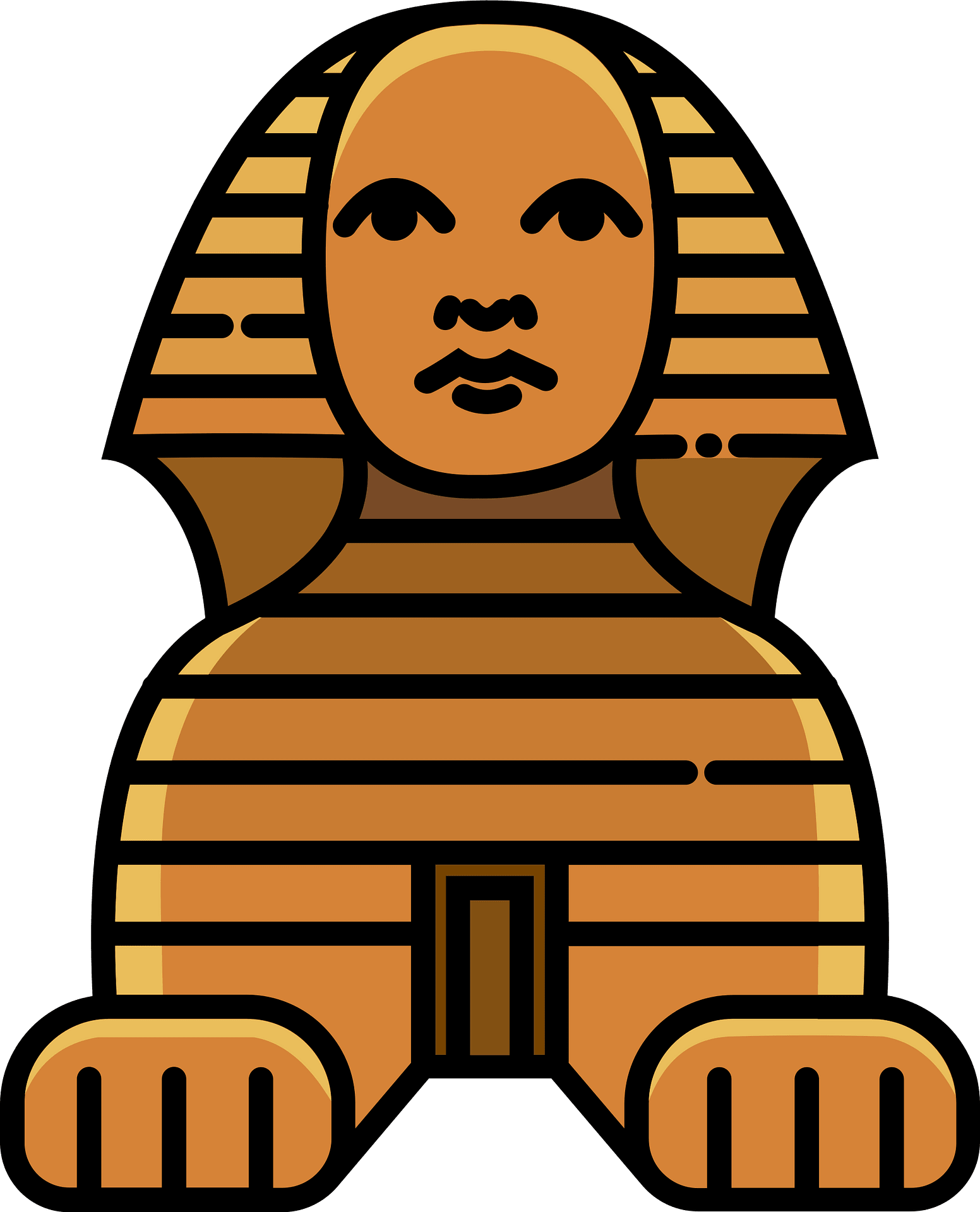
This image has format transparent PNG with resolution 1552x1920.
You can download this image in best resolution from this page and use it for design and web design.
Great Sphinx of Giza PNG with transparent background you can download for free, just click on download button.
The Great Sphinx of Giza is a limestone statue of a reclining sphinx, a mythical creature with the head of a human, and the body of a lion Facing directly from west to east, it stands on the Giza Plateau on the west bank of the Nile in Giza, Egypt. The face of the Sphinx appears to represent the pharaoh Khafre.
The original shape of the Sphinx was cut from the bedrock, and has since been restored with layers of limestone blocks. It measures 73 m (240 ft) long from paw to tail, 20 m (66 ft) high from the base to the top of the head and 19 m (62 ft) wide at its rear haunches. Its nose was broken off for unknown reasons between the 3rd and 10th centuries AD.
The Sphinx is the oldest known monumental sculpture in Egypt and one of the most recognisable statues in the world. The archaeological evidence suggests that it was created by ancient Egyptians of the Old Kingdom during the reign of Khafre (c. 2558–2532 BC).
The archaeological evidence suggests that the Great Sphinx was created around 2500 BC for the pharaoh Khafre, the builder of the Second Pyramid at Giza. The Sphinx is a monolith carved from the bedrock of the plateau, which also served as the quarry for the pyramids and other monuments in the area. Egyptian geologist Farouk El-Baz has suggested that the head of the Sphinx may have been carved first, out of a natural yardang, i.e. a ridge of bedrock that had been sculpted by the wind. These can sometimes achieve shapes which resemble animals. El-Baz suggests that the "moat" or "ditch" around the Sphinx may have been quarried out later to allow for the creation of the full body of the sculpture.
The stones cut from around the Sphinx' body were used to construct a temple in front of it, however neither the enclosure nor the temple were ever completed, and the relative scarcity of Old Kingdom cultural material suggests that a Sphinx cult was not established at the time. Selim Hassan, writing in 1949 on recent excavations of the Sphinx enclosure, made note of this circumstance:
Taking all things into consideration, it seems that we must give the credit of erecting this, the world's most wonderful statue, to Khafre, but always with this reservation: that there is not one single contemporary inscription which connects the Sphinx with Khafre, so sound as it may appear, we must treat the evidence as circumstantial, until such time as a lucky turn of the spade of the excavator will reveal to the world a definite reference to the erection of the Sphinx.
In order to construct the temple, the northern perimeter-wall of the Khafre Valley Temple had to be deconstructed, hence it follows that the Khafre funerary complex preceded the creation of the Sphinx and its temple. Furthermore, the angle and location of the south wall of the enclosure suggests the causeway connecting Khafre's Pyramid and Valley Temple already existed before the Sphinx was planned. The lower base level of the Sphinx temple also indicates that it doesn't pre-date the Valley Temple.
In this page you can download free PNG images: Great Sphinx of Giza PNG images free download, Egyptian sphinx PNG